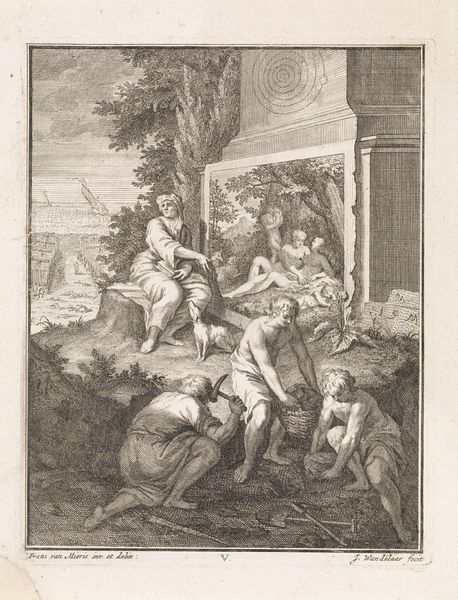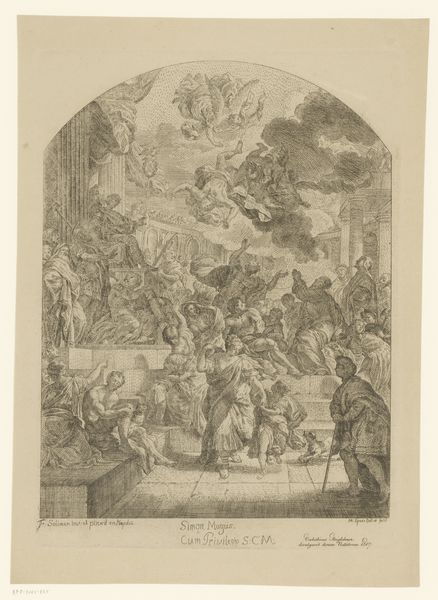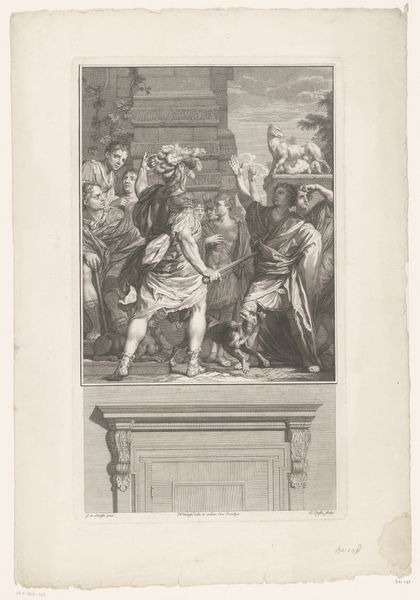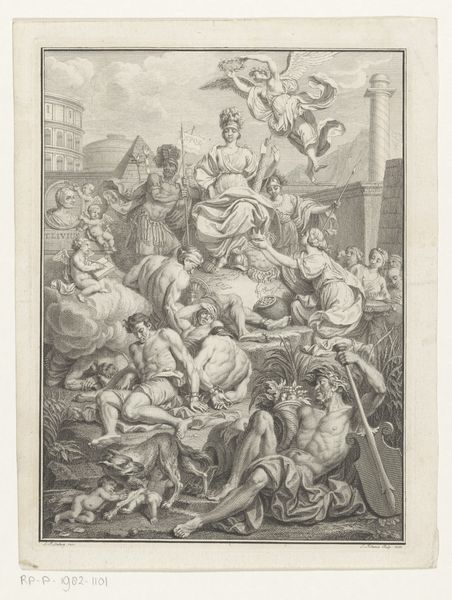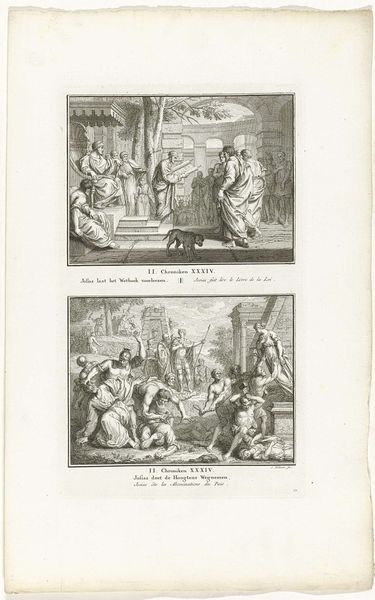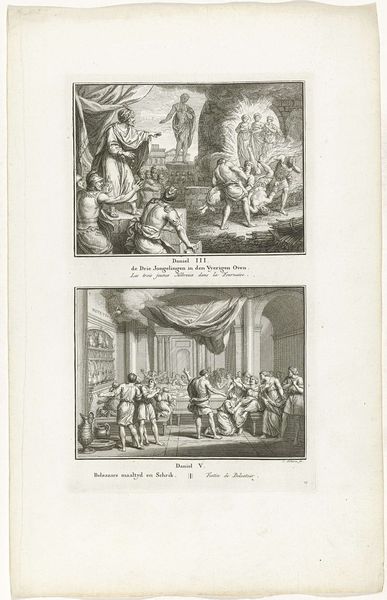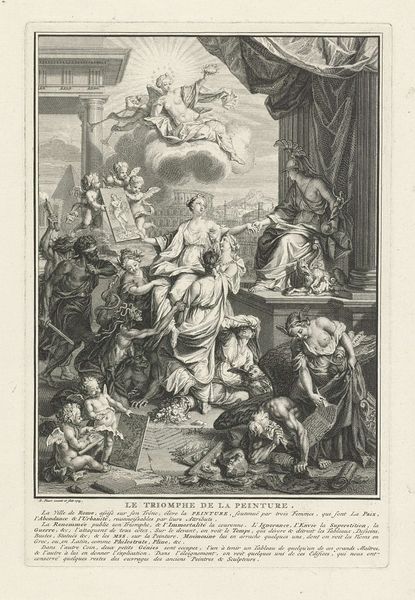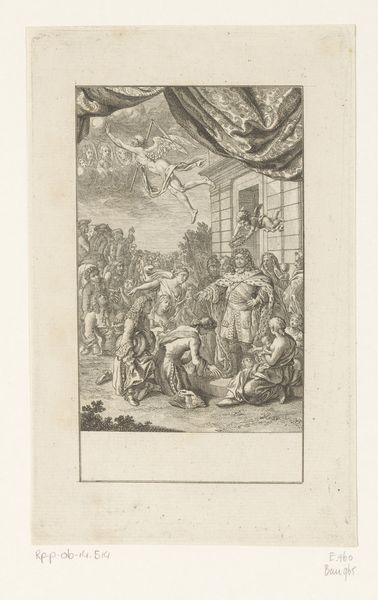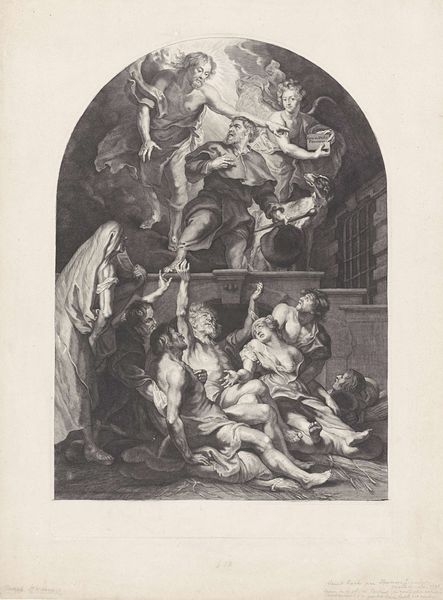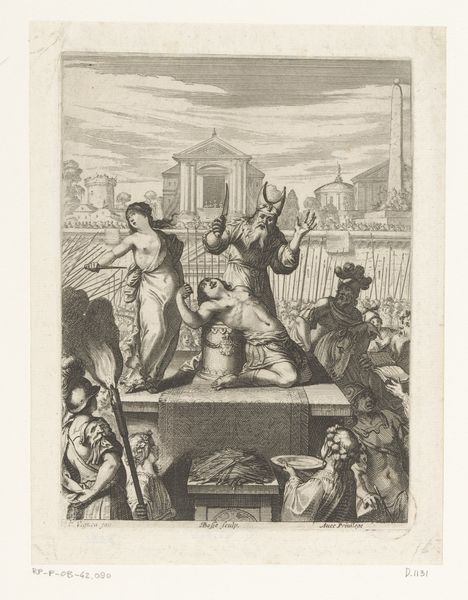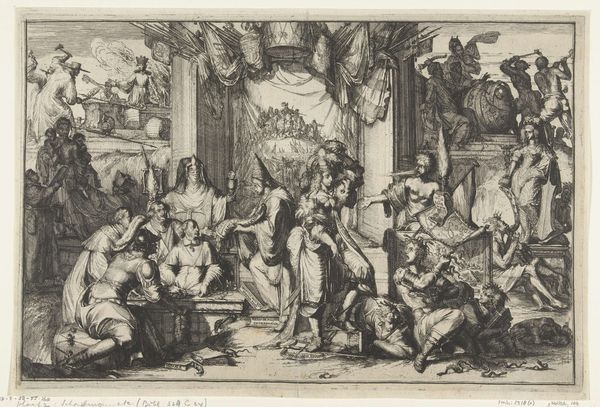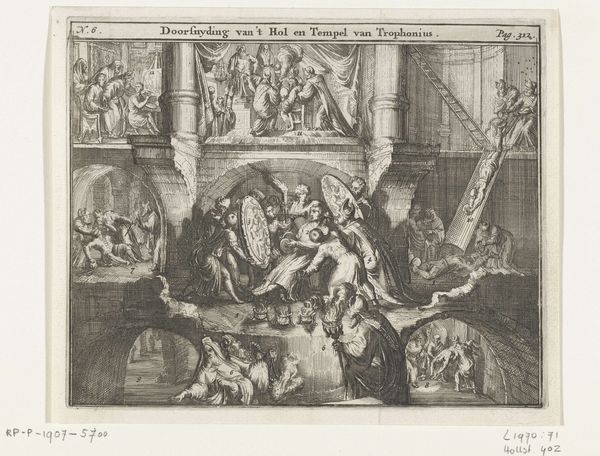
Titelprent voor het tweede deel van de Spaanstalige versie van Guerres de Flandres 1670 - 1699
0:00
0:00
romeyndehooghe
Rijksmuseum
print, etching, engraving
#
narrative-art
#
baroque
#
ink paper printed
# print
#
etching
#
old engraving style
#
figuration
#
line
#
islamic-art
#
history-painting
#
engraving
Dimensions: height 258 mm, width 152 mm
Copyright: Rijks Museum: Open Domain
Curator: This is the title page for the second part of the Spanish-language edition of "Guerres de Flandres," dating roughly from 1670 to 1699 and created by Romeyn de Hooghe. The etching and engraving presents a complex allegorical scene. Editor: It strikes me as a depiction of power, perhaps a triumph, rendered in a style that is both elaborate and a little…oppressive. There is a lot happening, creating an atmosphere of controlled chaos. Curator: De Hooghe was indeed a master of Baroque allegory. Consider the composition: on the lower portion we see a vanquished figure representing defeat, above which soldiers are supporting someone on their shoulders who’s gesturing to a queen seated within what appears to be an interior space, suggesting victory granted by royalty, under God’s approval shown in the upper corner. Editor: I'm curious about that figure being carried. Is he a symbol of conquest being elevated? And is the defeated figure below perhaps emblematic of the territories subjugated during the Wars of Flanders? How would such a representation have been viewed at the time, particularly in the context of Spanish colonial power? Curator: That's a sharp interpretation. The "Guerres de Flandres" documented a particularly turbulent period, so its imagery would've been highly politicized, even used to mobilize public opinion. Note, too, the figures are gendered to imply a divinely- sanctioned justification for expansion. Editor: It raises questions about how the narratives around war and conquest are constructed and visually disseminated, especially regarding intersectional power dynamics. Whose voices are amplified, and whose are suppressed? The subjugated being quite literally beneath… Curator: Absolutely. And, beyond that, how historical conflicts become enmeshed with constructions of national identity and monarchical power. This seemingly straightforward image of triumph reveals layers of ideology that actively shaped understandings of conflict. It calls into play post-colonial debates of national formation through acts of cultural representation. Editor: Seeing this print allows us to actively deconstruct it and consider it both as propaganda of its time and, furthermore, its lingering impacts today. It compels us to question such glorifications in their legacy. Curator: Precisely. Thank you. I think that perspective provides a valuable lens through which to critically engage not just with de Hooghe’s work, but with any visual representation of conflict and power.
Comments
No comments
Be the first to comment and join the conversation on the ultimate creative platform.
